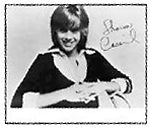A few weeks ago, I had an unrelentingly terrible day. Finally, I hit the gym to sweat the frustration out of my system. But in the changing room, I stubbed my naked toe on a locker. Without thinking, I threw back my head and railed at the Almighty with a stream of blistering obscenities.
God heard me, and has been retaliating ever since. Not in any traditional fashion, mind you. Plagues of locusts and frogs have bypassed my house, but he’s still hitting me where I live: my favorite musicians. First, in early February, he spirited singer/songwriter Gwen Guthrie, who’d graced the ’80s with dance classics like “Padlock” and “Seventh Heaven,” away from this mortal coil. The cruel irony was that the week she died, the no. 1 album in the country, Foxy Brown’s atrocious Chyna Doll, featured a Puff Daddy-style stab at Gwen’s biggest hit, “Ain’t Nothin’ Goin’ But the Rent.”
But the Big Guy didn’t stop there. A week ago, Tuesday, March 2, British pop star Dusty Springfield’s name popped up on the roll that’s called up yonder. Whether this was inevitable or no (the 59-year-old singer died of breast cancer), I’m taking it personally.
Dusty Springfield was born Mary Isabel Catherine Bernadette O’Brien. The only things bigger than her birth name were her lacquered blond bouffant and her husky, robust voice. With folk outfit the Springfields, she garnered her first taste of US chart success with “Silver Threads and Golden Needles” in 1962. While visiting New York, Dusty discovered American R&B, and had an epiphany that would alter the annals of pop-music history.
Throughout the ’60s, Springfield racked up a series of hits—”You Don’t Have to Say You Love Me,” “I Only Want to Be with You,” “Wishin’ and Hopin'”—distinguished by both unabashed enthusiasm and surprising restraint. Whether delivering a ballad or a barnstormer, she intuitively knew when to stir things up, and when to simmer down.
This element of her artistry, her remarkable versatility, permeates last year’s expansive three-disc The Dusty Springfield Anthology (Mercury/Chronicles). But more impressively, it also shines brightly on the full-length LPs of her heyday. While the standard modus operandi for ’60s pop artists was to stitch together the most recent hit singles with sufficient filler to round out 30 minutes on wax, Springfield never treated these lesser-known tracks as poor relations.
I discovered this firsthand in college. New-wave faves Elvis Costello and Aztec Camera had praised her 1969 masterpiece Dusty in Memphis (featuring “Son of a Preacher Man”) in my beloved British music press, but in Bloomington, Indiana, I had to settle for a 99-cent copy of her 1967 LP The Look of Love.
Along with the intimate Bacharach and David title track (featured in Casino Royale) and the rollicking single “What’s It Gonna Be,” nine other cuts rounded out the ride. At first my boyfriend and I had trouble getting past side one; it was so good, we couldn’t bear to flip over the record. Dusty neatly divorced both “(They Long to Be) Close to You” and Rod Mc-Kuen’s wretched English translation of Jacques Brel’s “If You Go Away” from their treacly AM-radio affiliations. And her driving Las Vegas rendition of “Come Back to Me” from On a Clear Day You Can See Forever simply blew Streisand’s frantic original out of the water.
But the song I keep playing this afternoon actually closes side two: “Chained to a Memory.” My own sentiments don’t accurately reflect the singer’s wounded delivery, but the lyrics are appropriate regardless: “Why am I chained to a memory/Why does the thought of you still torture me/When will I find someone to set me free?” Never, I reckon. I miss you already, Dusty.
So Dusty and Gwen are hoisting highballs in heaven with Janis Joplin and Mama Cass, all of them looking over at Selena and begging her to eat something, please. And I’m stuck here on Earth, with Mariah Carey, Celine Dion, and Shania Twain bleating from every radio in earshot. Message received. I’m sorry, God. It won’t happen again.





